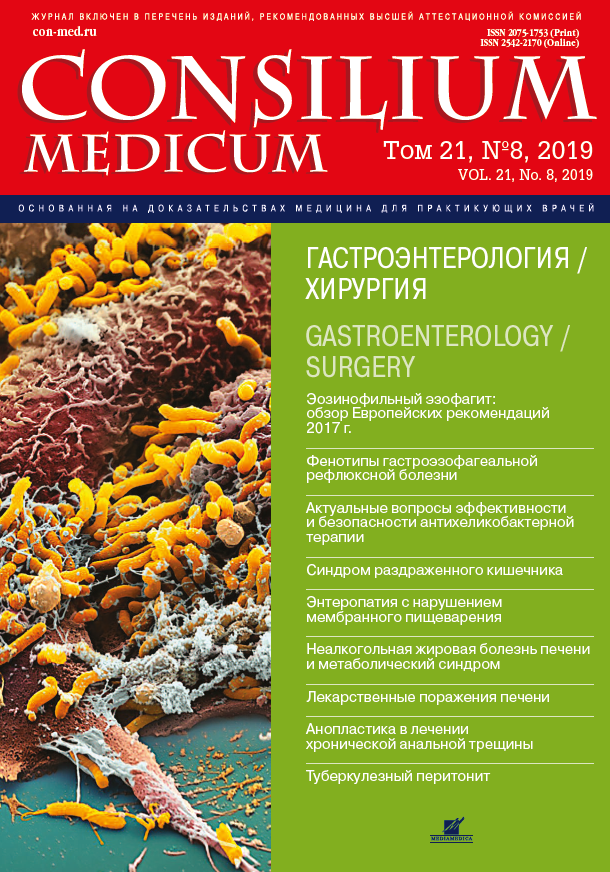Aim. To define the epidemiological, clinical and endoscopic features of GERD, factors for development of erosive esophagitis (EE) and predictors of the effectiveness of PPI therapy in patients of a megapolis. Materials and methods. The study included 1433 patients with GERD from Moscow, Moscow region and St. Petersburg. There were 595 (42%) men and 838 (58%) women with the average age 48±16 years (from 7 to 91 years) among the examined patients. The study design included 3 visits with an interval of 4 weeks, during which complaints and anamnestic data gathering, anthropometry, upper endoscopy, tests for Helicobacter pylori infection and adherence evaluation were performed. For acid-suppression rabeprazole was prescribed for most of the patients (1333, 96%). Results. Among the male patients, the most common was the age group of 30-39 years (30%), among women - 60-69 years (23%). In patients with the duration of GERD for more than 5 years, the chance of having a high degree of changes in the esophagus mucous (erosive esophagitis B-D) was significantly higher than in patients with the disease duration for less than 5 years (OR 1.85). The proportion of patients with overweight and obesity dominated among the examined (904 patients - 62.7%). At visit 1, in 614 (47.8%) patients EE was found, and in 618 (48.1%) - NERD. In patients with EE infected with H. pylori, B-D stages were observed 1.3 times more often than among patients with EE without H. pylori (p<0.05, 95% CI 1.02-1.54). Previous PPI therapy was not effective enough in 288 (34%) patients with EE and in 559 (66%) patients with NERD. At visit 3, the results of the GERD questionnaire were significantly higher in the group of patients with obesity and in the group of smokers compared with patients with normal BMI and non-smoking patients. The lowest percentage of mucous healing after 4 weeks of PPI therapy was observed among patients with EE stage D. Among patients with high adherence to therapy, remission was achieved in 95% of cases. PPI rabeprazole was effective in relieving symptoms of the disease in 81.2% of patients and in healing of the esophagus mucous - in 79.6%. Conclusion. Excess body weight and obesity, waist circumference above normal values, duration of GERD for more than 5 years, H. pylori, the presence of comorbid pathology and concomitant drug therapy increases the risk of EE development. The effectiveness of PPI therapy is significantly influenced by smoking, the severity of EE, the choice and duration of PPI treatment, and patient adherence to the therapy.
 9-14
9-14


 15-22
15-22


 23-28
23-28


 29-34
29-34


 35-41
35-41


 42-48
42-48


 49-57
49-57


 58-64
58-64


 65-70
65-70


 71-73
71-73


 74-77
74-77


 78-83
78-83


 84-87
84-87


 88-92
88-92


 93-97
93-97


 98-101
98-101


 102-107
102-107


 108-115
108-115


 116-122
116-122







